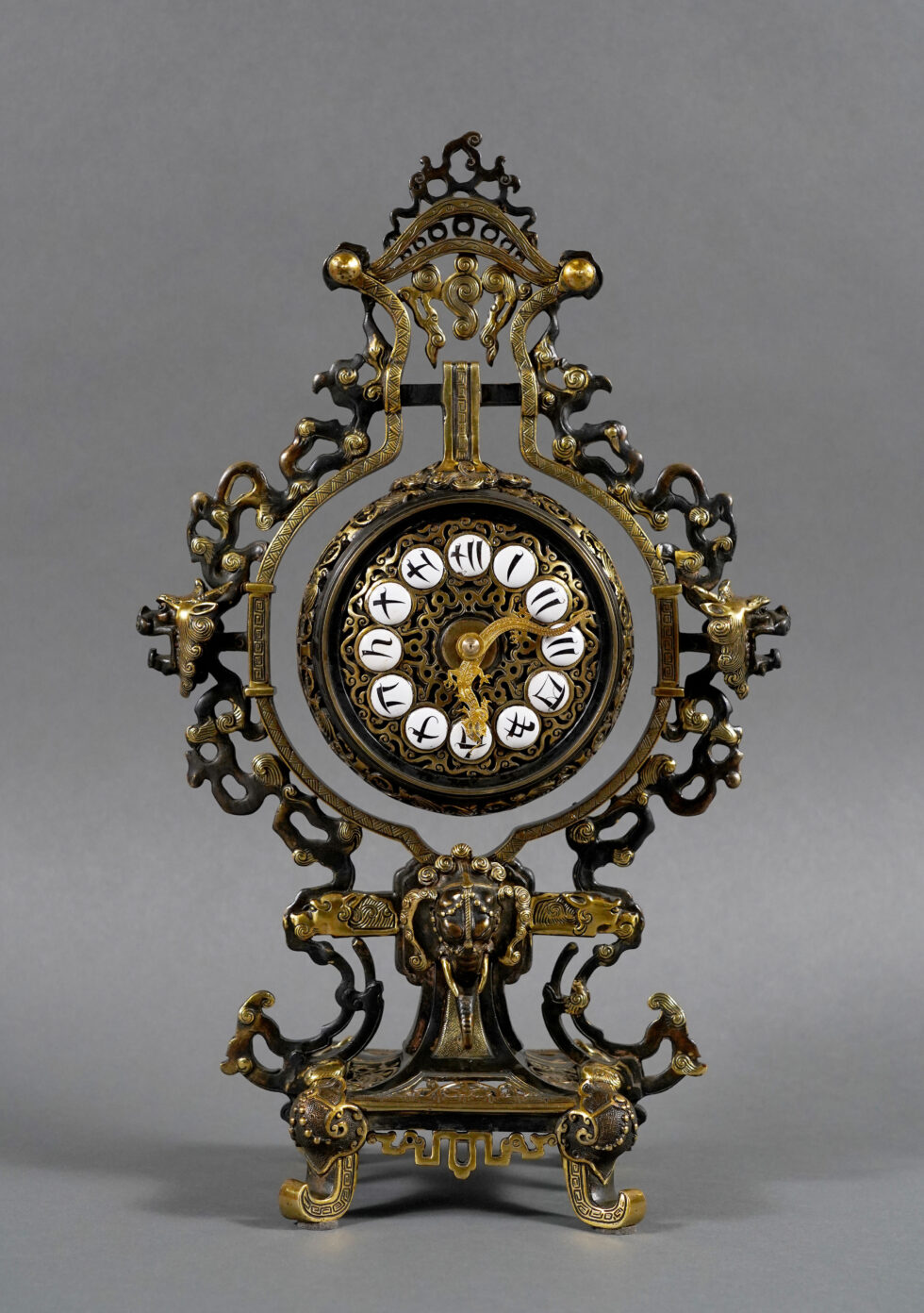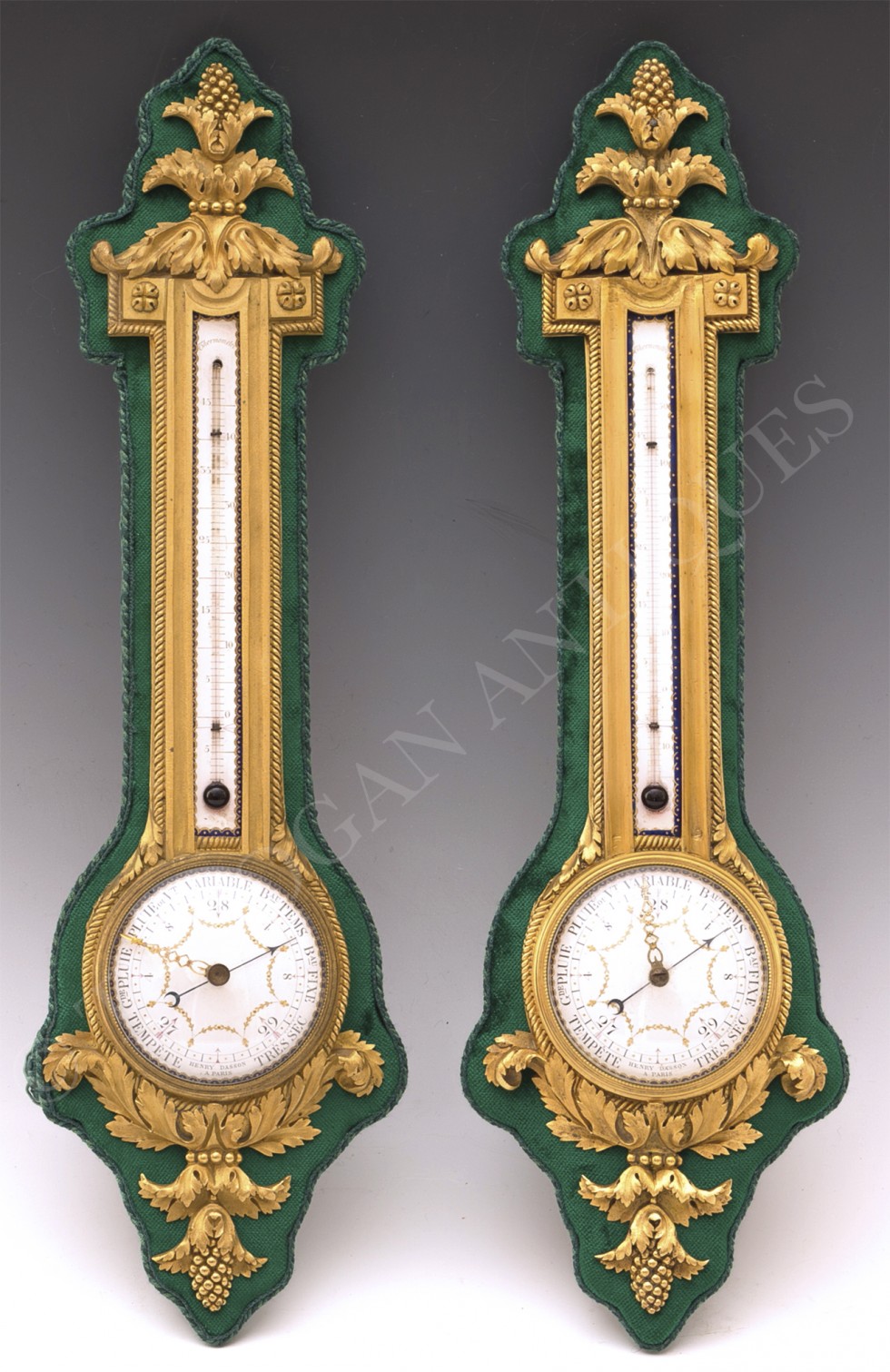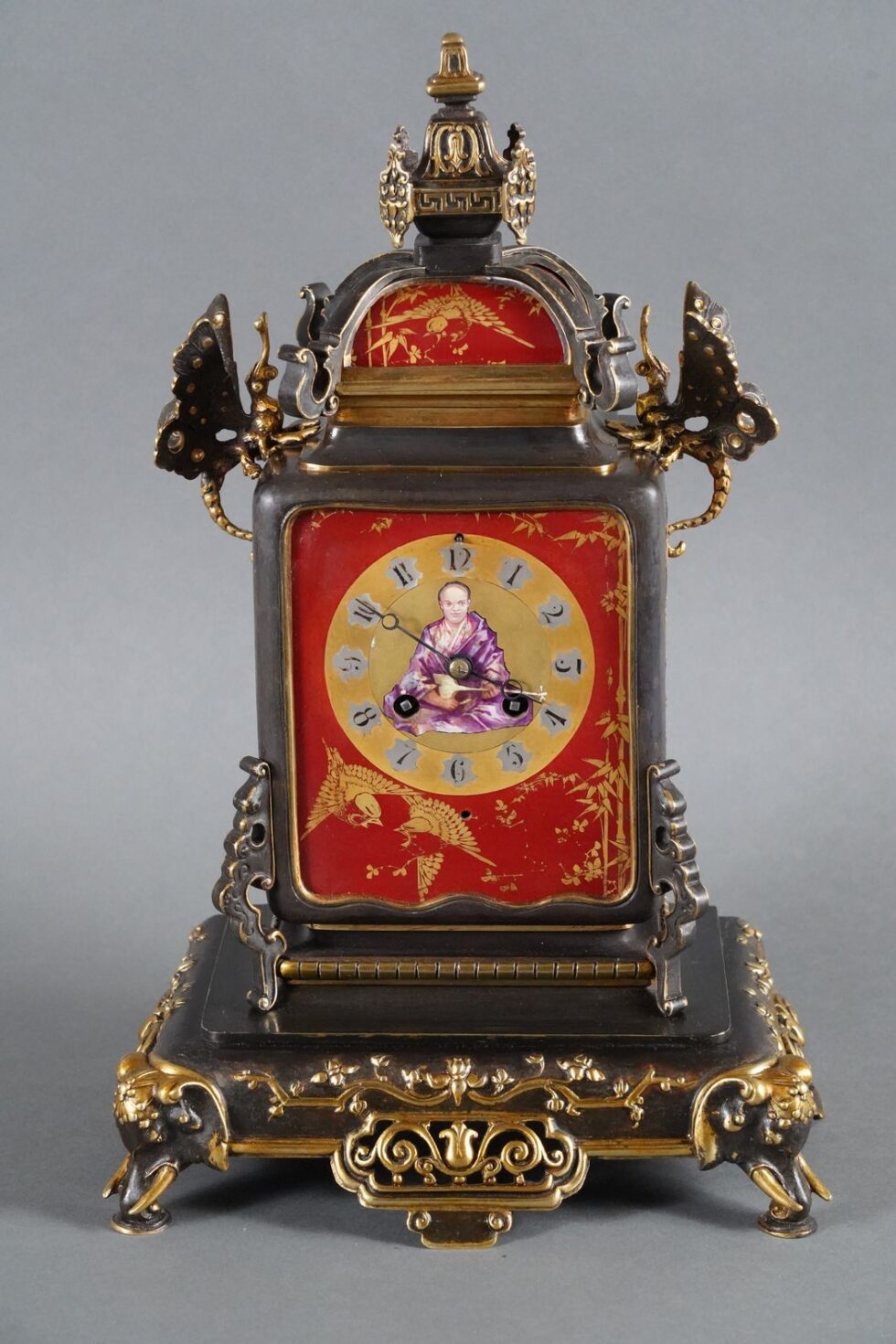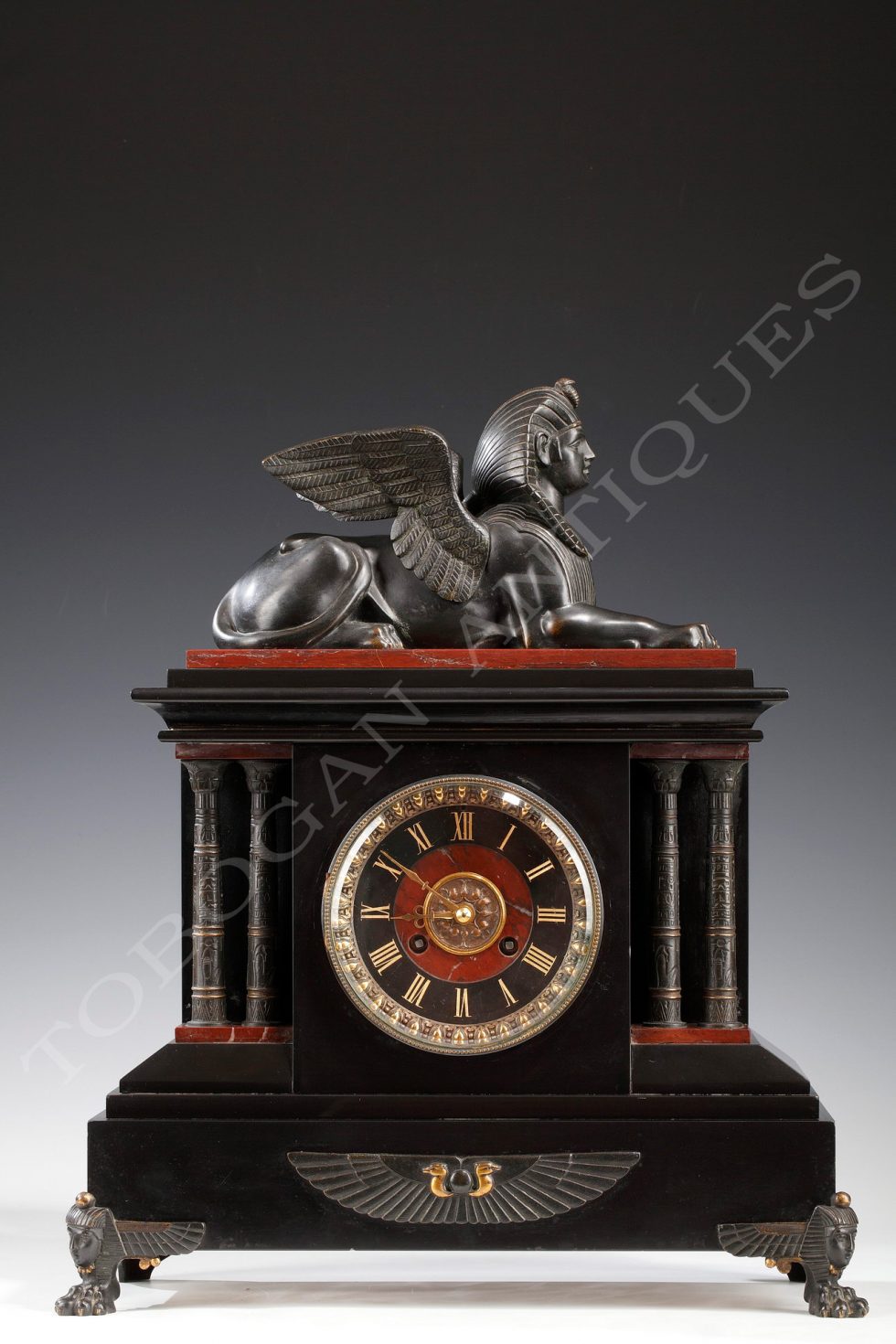ref. 1444/6
Samson & Cie
Porcelain Manufacture
(19th Century)
Charming “Chinoiseries” Clock
France
Circa 1880
Height : 28 cm (11 in.) ; Width : 15 cm (6 in.) ; Depth : 12,5 cm (5 in.)
Charming polychrome porcelain, green lacquered metal sheet and chiseled gilt bronze Louis XV style clock. A gilt bronze bush, decorated with small porcelain flowers and metal sheet foliage, supports the circular face, with Arabic numbers for hours. Rests on a gilt bronze foliage base decorated with a porcelain family scene composed of two parents playing and embracing their child.
This type of clock first appears during the reign of Louis XV. The importation of exotic goods and the opening of the Turkish Embassy, in Paris in 1721, considerably influenced Louis XV style, with the apparition of exotics characters, scenes and animals ornamenting decorative arts.
Biography
Edmé Samson (1810-1891), painter on ceramics established 1845 at n°7 rue in Paris, bought his white porcelain pieces, in other words undecorated porcelains from various Paris manufactures. His son, Emile (1837-1913) who succeeded him, began to make reproductions from older models. Exhibiting at the 1863 Exposition of the fine Arts applied to Industry, Emile Samson became particularly noted for his porcelain works imitating the « Old Japan » ones. He installed in 1864 a factory in Montreuil-sous-Bois, nearby Paris and enjoyed great success at the Paris International Exhibition of 1867 with their imitations of Saxony, China and Japan porcelain pieces, all considered of very fine quality. At the 1889 Universal Exhibition, Samson & Cie was deemed to be specialized in large size pieces, made either in porcelain or earthenware, whose models were chosen from the most well-known museums, such as the Louvre Museum in Paris and the Victoria & Albert Museum in London. In 1891, Emile went into partnership with his son Léon (1868-1928), under the name Samson & Son, who gave a major extension to the factory, employing a large number of workers and decorators. In addition to the manufacturing of porcelain, they also made their own bronze decorative mounts used on the pieces.
Bibliography
F. Slitine, Samson, génie de l’imitation, Massin, Paris, 2002.
Faîence et porcelaine de Paris, XVIIIe-XIXe siècles, Régine de Plinval de Guillebon, Editions Faton, Paris, 1995, p° 406 & 407
La pendule française dans le monde, Ire Partie : Des Origines à la transition Louis XV-Louis XVI, Tardy, Tardy, 1981.
Contact us
Tobogan Newsletter
If you want to be up-to-date with our new acquirings you can sign up to our newsletter.











